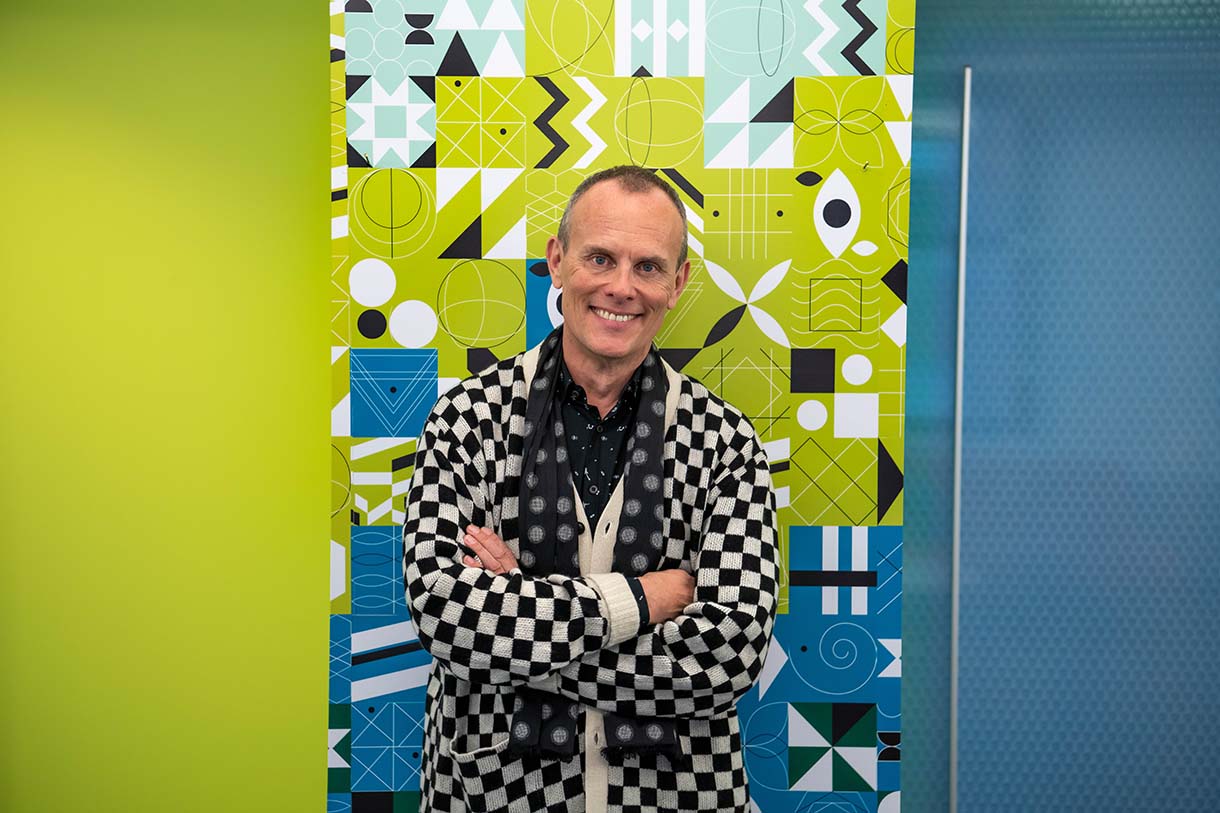Advertising Innovator Brings His Passion for Branded Entertainment to Columbia

At the intersection of brand and popular culture lives branded entertainment: Multimedia content designed to sell products and ideas.
“In my definition of branded entertainment, you have a brand or product, identify who you want to target to sell that product to, and find out what kinds of things that are interesting for them in popular culture,” explains Tom Eslinger, an assistant professor in Communication who teaches courses in Advertising at Columbia College Chicago. And then, you produce things – such as movies, videos, social media, and events – based on those interests, Eslinger says. And you hope your audience connects with the brand so that they either buy it or begin to favor it.
Ad agencies have been weaving products into storytelling since the early days of radio when soap companies sponsored day-time serials aimed at women — shows that eventually became known as soap operas. Since then, branded entertainment has evolved thanks to our multimedia universe in which video games and toys become fodder for movies and T.V. shows, and TikToks pitch dish sponges using Family Guy characters.
Eslinger, an advertising veteran and branded entertainment innovator, came to Columbia this past fall to share his expertise with Columbia students. And this semester, he teaches a course in branded entertainment. The class appeals to a broad range of students as it requires the talent of a variety of creatives to produce (e.g., copy writers, animators, graphic designers, filmmakers, social media pros, marketing strategists), and offers a tool for creatives to promote their own work.
“I'm crazy passionate about it, because not only is it fun, but it works,” he says.
During his years at Saatchi and Saatchi as Global Digital Creative Director, a multinational communications and advertising firm, Eslinger developed branded entertainment campaigns to sell everything from gum to cars to beer. He targeted EDM music lovers and produced live events, and subsequent videos, with the likes of DJ Steve Aoki and Duran Duran to promote Trident. And worked with Katie Perry on a campaign that recruited talent for her next video but also sought to sell T-Mobile.
In each case, the initial event — the live concert and the ad campaign wrapped in a music vdieo – spawned the creation of more content, providing the ad agency more material to disseminate via various media channels to pitch the products as part of their campaign.
“The way that I approach work is …. If the idea is a cake, don't leave any crumbs,” Eslinger says. “We just take that idea and just swim it through culture as much as possible.”
After leaving Saatchi and Saatchi, Eslinger worked as Brand Creative Director at Framestore, a special effects powerhouse to help them establish a direct-to-brand creative and strategy capability, pitching and winning virtual reality, augmented reality, and film projects to produce work for companies such as Coca Cola. And he later served as Global Creative Director for Burson Marsteller/BCW.
Teaching, though, called his name. While he taught at the beginning of his career at the Wanganui School of Design in New Zealand, it had been a while since he had been in the classroom. He likes the changes he sees.
“Technology has caught up with education where now you don't have to teach computer skills because students have grown up surrounded by media,” he says. “So basically, you're just talking about ideas and how to use the technology to communicate ideas.”
Since coming to Columbia from New York, Eslinger — who, when not on campus, designs fonts and creates unique artworks with stickers (everything from phone cases to furniture) — Eslinger has been impressed by his students and their creative energies and hopes his teaching can be impactful.
“I had great teachers and that's how I got where I am, having great teachers that looked after me,” he says. “I love teaching and I love being around young, creative people.”